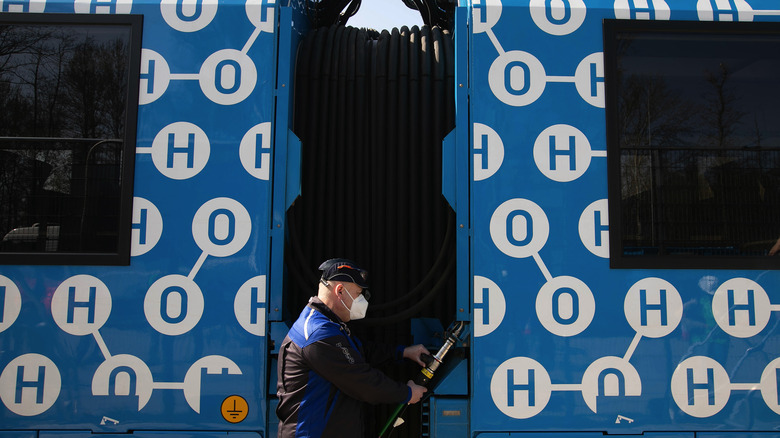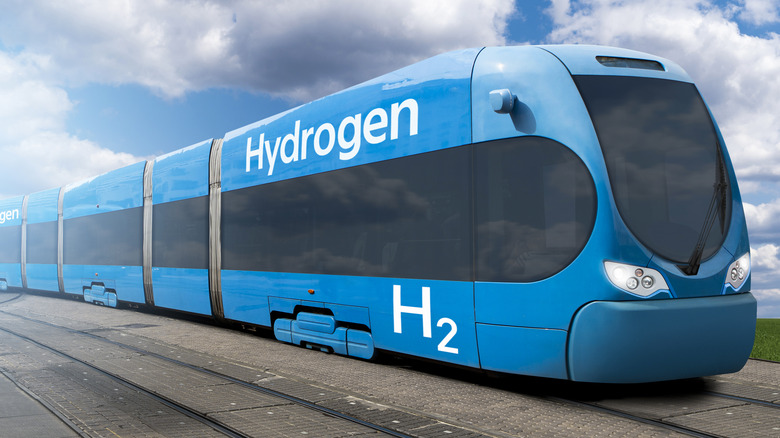Hydrogen Powered Trains Explained: Could They Be The Future Of Travel?
Locomotives are responsible for a huge portion of the transportation sector, demonstrated in stark fashion during the height of the COVID-19 pandemic. A single freight train can be several miles long, and that's a lot of goods no matter how you look at it, so an argument can certainly be made about their superior fuel efficiency compared to over-the-road freight. But there's no denying that the sheer amount of fuel they burn is tremendous. For Class I North American railroads, it's not uncommon for fuel to be their largest expense, second only to payroll. But could there be another way?
French railway vehicle manufacturer Alstom seems to think so, and they're demonstrating their solution in North America for the first time this summer with their Coradia iLint passenger train. What sets this train apart from other North American trains is that it's powered by hydrogen, a clean and sustainable resource that emits only water vapor as exhaust.
Hydrogen can be made from water molecules by separating it from oxygen. This process does take energy, but — as reported by the CBC — the hydrogen for this particular train is produced by a Canadian company using electricity from hydropower and wind. Hydrogen can be used to power not only trains but also cars and even airplanes. The technology is not only cleaner but quieter than its diesel counterparts. So how soon before you might board a hydrogen-powered train?
Hydrogen trains are already here
If you're in Quebec this summer, you can ride the Alstom train from Quebec City to Baie-Saint-Paul through the end of September. And hydrogen trains are already fully operational in Germany. But what does the future of rail travel look like in North America?
While other parts of the world have more readily adopted passenger rail — particularly high-speed rail — it's been less popular in North America. But that doesn't mean hydrogen trains aren't coming. Amtrak California, for example, has hydrogen-powered passenger trains currently on order for 2027. North America also has large expanses of open land where it can be difficult and expensive to build infrastructure such as overhead electric cables for railcars. Hydrogen trains are an excellent solution for just this scenario.
Freight rail companies are also eager to get in on locomotive technology that can reduce harmful emissions while also reducing expenses. BNSF Railway Company, a subsidiary of Berkshire Hathaway, is working with partners on hydrogen fuel cell technology for this purpose, though it's likely still years away from production.
Hydrogen trains aren't the future of passenger rail — they're the present. They're already here. It just depends on where "here" is in relation to you. But with the promise of the technology being so great, you might find yourself aboard a hydrogen-powered train sooner than you think.

